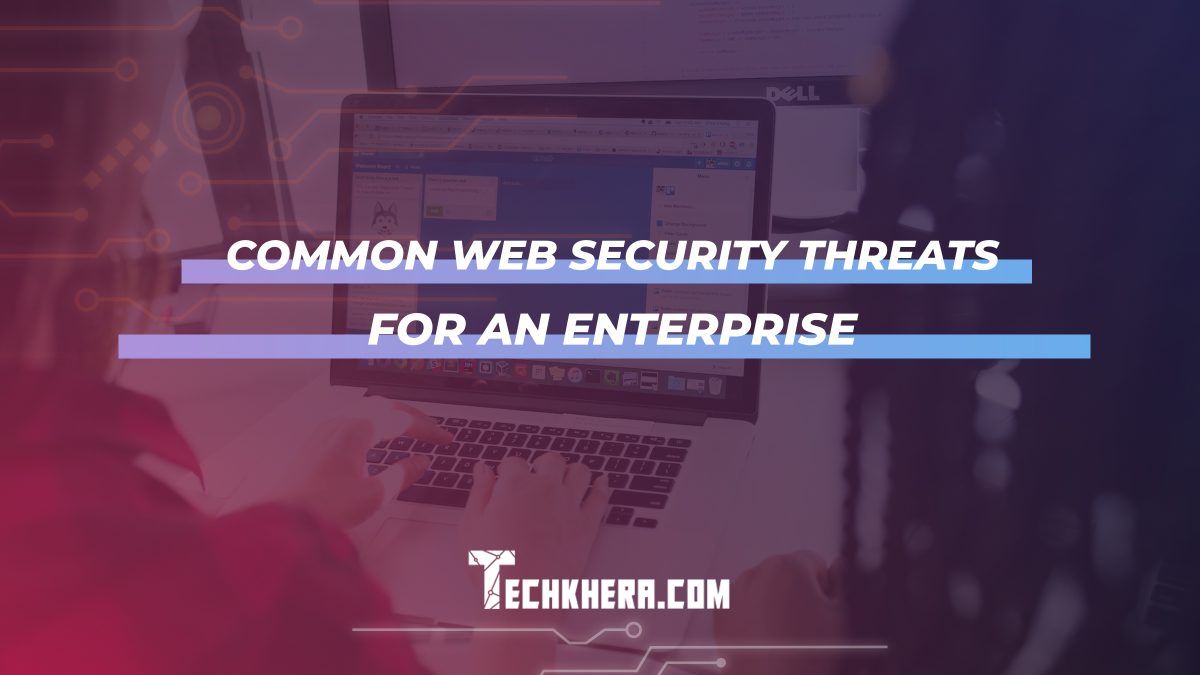
Common Web Security Threats for an Enterprise
In today’s digital age, where enterprises heavily rely on web applications and online platforms, web security has become a paramount concern. Cybercriminals are constantly evolving their tactics to exploit vulnerabilities and gain unauthorized access to sensitive data. As an enterprise, understanding and defending against common web security threats is crucial to maintaining a secure online environment. In this article, we’ll explore some of the most prevalent web security threats and highlight countermeasures.

Contents
Common Web Security Threats
1. Phishing Attacks: Phishing involves tricking users into revealing their confidential information, often through fake emails or websites. Employees should be educated to recognize phishing attempts and avoid clicking on suspicious links.
2. Malware and Ransomware: Malicious software can infiltrate an enterprise’s systems, leading to data breaches, data theft, or even ransomware attacks that encrypt valuable data until a ransom is paid.
3. SQL Injection: Attackers manipulate input fields to inject malicious SQL queries into databases, potentially gaining unauthorized access to sensitive data.
4. Cross-Site Scripting (XSS): Hackers inject malicious scripts into web pages that are then executed by users’ browsers, leading to data theft, session hijacking, and other malicious activities.
5. Cross-Site Request Forgery (CSRF): In a CSRF attack, a user is tricked into performing actions on a website without their knowledge, potentially leading to unauthorized actions.
6. Brute Force Attacks: Hackers use automated tools to repeatedly guess usernames and passwords until they gain access. Implementing strong password policies and using CAPTCHA can help mitigate this threat.
7. Denial of Service (DoS) Attacks: These attacks overwhelm a system’s resources, causing services to become unavailable. Implementing proper load balancing and firewall configurations can help prevent or mitigate DoS attacks.
8. Insider Threats: Employees with access to sensitive data can intentionally or accidentally compromise cybersecurity. Implement strict access controls and regular employee training to mitigate insider threats.
Countermeasures and Tools
1. Login Lockdown: The Login Lockdown plugin is a security tool designed to prevent brute force attacks on WordPress websites. It restricts the number of login attempts from a single IP address, preventing hackers from repeatedly guessing passwords.
2. WP Force SSL: WP Force SSL is a plugin that forces your WordPress website to use secure HTTPS connections. It encrypts data transmission between users and the server, reducing the risk of data interception.
Best Practices to Enhance Web Security
1. Regular Updates: Keep your software, including content management systems (CMS), plugins, and themes, up to date to patch known vulnerabilities.
2. Secure Authentication: Implement multi-factor authentication (MFA) for user logins, making it significantly harder for attackers to gain unauthorized access.
3. Web Application Firewalls (WAF): Utilize WAFs to filter and monitor incoming web traffic, identifying and blocking malicious requests.
4. Regular Backups: Regularly back up your data to recover in case of a cyberattack. Store backups in a secure location.
5. Employee Training: Educate your employees about web security threats, phishing attacks, and safe online practices to prevent unintentional security breaches.
6. Access Control: Implement the principle of least privilege, ensuring that users have only the necessary access to perform their tasks.
7. Penetration Testing: Regularly conduct penetration testing to identify vulnerabilities in your web applications and address them before hackers exploit them.
8. Security Audits: Perform periodic security audits to assess your system’s overall security posture and identify potential weaknesses.
9. Hide Your IP: One way to enhance web security is to use residential proxies. By masking your IP address and real location, you can improve your anonymity and hide information.
In the complex landscape of web security threats, enterprises must be vigilant and proactive to safeguard their digital assets. From phishing attacks to DoS incidents, the range of potential threats requires a multi-faceted approach to security. By implementing countermeasures, leveraging security tools like Login Lockdown and WP Force SSL, and adhering to best practices, enterprises can significantly mitigate the risk of cyberattacks. Remember that web security is an ongoing process; staying informed about emerging threats and adapting your defenses accordingly is essential to maintaining a secure digital environment for your enterprise.
